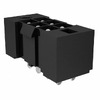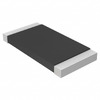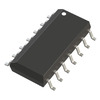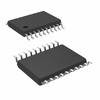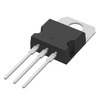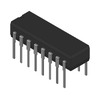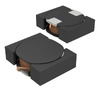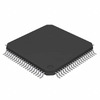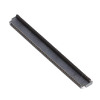CR2032 and CR2450 Button Batteries
Button batteries, like the CR2032 and CR2450, play a big part in powering many small electronic devices, from watches to medical equipment. Although they share the same voltage, these batteries are different in size, capacity, and use. This article looks closely at the CR2032 and CR2450, comparing their features, performance, and best uses. By looking at factors like capacity, size, and how well they fit, we aim to help you choose the right battery for your device to make sure it works well.Catalog

Understanding Button Batteries
Button batteries get their name from their small, coin-like shape. These compact power sources are used in many small electronic devices. Their naming system is simple: the letters in the model name show the battery type, while the numbers tell the size—the first two digits show the diameter, and the last two show the thickness.
CR2032 vs CR2450: What’s the Difference?
CR2032
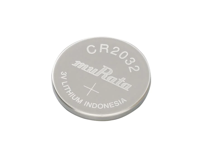
The CR2032 battery, made by popular brands like Panasonic, is often used in small devices like calculators, remote controls, and sensors. It has a positive electrode made of manganese dioxide and a negative electrode made of lithium. One big benefit is its long shelf life and low self-discharge, making it a good choice for devices that are in standby mode for a long time. With an operating temperature range of -20°C to 70°C, it works well in different environments.
In real use, the CR2032 is reliable because its chemical makeup keeps the voltage steady for a long time. This is especially helpful for devices like medical implants, where steady power is needed. This stable performance supports technologies that need to work for long periods without interruption.
Other Models Similar to CR2032
• BR2032
• DL2032
• LiR2032
• ML2032
• SR926
These alternative models follow the same basic features as the CR2032, making them compatible with many devices. Some are made for special needs, like the rechargeable LiR2032 or the higher voltage SR926.
CR2450
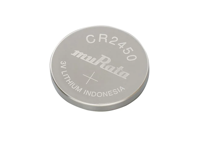
The CR2450 battery follows the IEC naming system and has a lithium metal negative electrode and a manganese dioxide positive electrode. The "CR" shows it’s a button cell battery, while "2450" tells its size— "24" for the diameter in millimeters and "50" for the thickness in tenths of a millimeter. This battery is used in things like remote controls and memory back-ups because of its large capacity and long life.
The CR2450 is larger than the CR2032, which means it can store more energy. This makes it good for devices that need more power or those that need to run for long periods without changing the battery often. For example, in smart home devices, the CR2450’s larger energy capacity allows for more advanced features and longer times between maintenance.
Other Models Similar to CR2450
• CR2450N
• CR2477
• EC2450
• KEC2450
• LM2450
These alternative models of the CR2450 come in different sizes and energy capacities, fitting the needs of various devices. The CR2450N offers a bit more capacity, while the CR2477 provides a big increase, which is good for devices that need a lot of energy.
By looking at both the CR2032 and CR2450 batteries in detail, it’s clear that each is used for different reasons depending on their size and capacity. The choice between them should be based on the specific needs of the device, like how much energy it needs, space limits, and how long the battery will last. This understanding helps to improve the performance of devices and meet the practical needs of different electronic applications.
CR2032 vs CR2450: Symbol and Footprint

CR2032 vs CR2450: A Comparative Analysis
The CR2032 battery, known for its stainless steel casing, is great at resisting corrosion and stopping leaks due to its edge insulation. It uses manganese dioxide (MnO2) as the positive material and lithium as the negative, providing a good balance between performance and lifespan. Typically, it lasts around five years, though some users have reported it lasting up to eight or even ten years in the right conditions. Commonly used in wristwatches and small electronics, its lifespan can vary depending on temperature and how often it's used. Its small size makes it perfect for devices where space is limited.
On the other hand, the CR2450 battery is known for its strong energy output and low self-discharge rate, allowing it to hold its charge even during long storage periods. It's mercury-free and meets environmental standards, delivering a high voltage of 3V, which helps keep devices running efficiently and lightweight. These qualities make it a great choice for high-power devices such as medical equipment and smart gadgets. In real-world usage, the CR2450 shows its ability to handle power-heavy tasks, showing its dependability and flexibility across different technologies.
Deciding between the CR2032 and CR2450 mainly depends on the specific device and what it needs to perform well, as each battery has unique benefits suited for different purposes.
CR2032 vs CR2450: Technical Parameters
| Part Number | CR2032 | CR2450 |
| Manufacturer | Panasonic | Panasonic |
| Packaging | Tray | Tray |
| Width | 20 mm | 24.5 mm |
| Height | 3.2 mm | 5 mm |
| Weight | 2.9 g | 3 g |
| Capacity | 225 mAh | 620 mAh |
| Battery Chemistry | LiMnO2 | LiMnO2 |
| Termination Style | Pressure Contacts | Pressure Contacts |
| Output Voltage | 3 V | 3 V |
| Operating Temperature | -30°C ~ 60°C | -30°C ~ 60°C |
| Rechargeable/Non-rechargeable | Non-Rechargeable | Non-Rechargeable |
| Product Category | Coin Cell Battery | Coin Cell Battery |
CR2450 vs CR2032: Applications
CR2450 Applications
CR2450 batteries are widely used in many modern electronic devices due to their high power capacity and dependable performance. They are often found in remote controls, where their energy density provides long-lasting power, reducing the need for frequent replacements. In calculators, they help maintain consistent and accurate operation by providing steady voltage for precise calculations. CR2450 batteries are also used in sensors, especially in smart homes and security systems, where they offer reliable power with minimal upkeep. Small personal digital assistants (PDAs) benefit from their larger capacity, allowing longer use between charges. In Bluetooth headsets and wearable tech like fitness trackers and smartwatches, the CR2450 provides long-lasting energy. Additionally, digital thermometers, especially in medical settings, rely on CR2450 batteries for precise and long-term temperature readings.
CR2032 Applications
The CR2032 battery is valued for its small size and steady power output, making it perfect for devices that need accuracy. It powers glucometers, offering stable and accurate readings, which are necessary for managing diabetes. CR2032 batteries are also used in card readers, providing steady performance for secure transactions. They are often found in digital thermometers, ensuring accurate measurements in both medical and industrial environments. Heart rate monitors also depend on CR2032 batteries, where their small size and stable voltage offer continuous power for precise health tracking. In portable GPS devices, the CR2032 provides reliable power, helping with accurate navigation. Additionally, in computer hardware, CR2032 batteries maintain the Real-Time Clock (RTC) and system settings, which are crucial for keeping computing systems running smoothly.
CR2450 vs CR2032: Dimension and Packaging
Both the CR2450 and CR2032 lithium button batteries have the same nominal voltage of 3.0V, but they differ quite a bit in size. The CR2032 is 20mm in diameter and 3.2mm thick, while the larger CR2450 measures 24.5mm in diameter and 5.0mm in thickness. These size differences affect how much energy they can store and how long they last.
When choosing between these batteries, you need to think about more than just size. You also need to consider how much space is available in your device and how long you want the battery to last. For example, fitness trackers tend to use the slimmer CR2032 because they prioritize compactness. On the other hand, home automation systems, which need backup power, might prefer the CR2450 since it lasts longer before needing to be replaced.
CR2450 vs CR2032: Comparative Analysis of Capacity
The CR2450 typically has a capacity of 600-700mAh, which is much higher than the 200-250mAh range of the CR2032. This larger capacity allows for longer use, making the CR2450 a better choice for devices that need to run for a longer time without frequent battery changes. In high-power devices like cameras or medical equipment, the CR2450’s bigger capacity helps the device run more smoothly and reduces the need for frequent battery swaps, making it a more practical option for improving overall device performance and user satisfaction.
Can CR2450 and CR2032 Be Used Interchangeably?
Although both the CR2450 and CR2032 share a nominal voltage of 3.0V, their differences in size and capacity make them unsuitable for interchangeable use. The CR2450 is larger, with a diameter of 24mm and a thickness of 5.0mm, while the CR2032 is smaller, with a 20mm diameter and 3.2mm thickness. These size differences affect how they fit into devices designed for specific battery sizes. Additionally, the CR2450 has a capacity of about 620mAh compared to the CR2032's 225mAh, meaning they power devices for different lengths of time. Using the wrong battery may cause poor performance, device issues, or even physical damage to the battery compartment. To ensure your device runs well and lasts long, it's important to follow the manufacturer's guidelines for battery replacement, keep the battery terminals clean, and use the right size. In short, even though they have the same voltage, the CR2450 and CR2032 cannot be used interchangeably because of their size and capacity differences. Using the correct battery is necessary to keep devices safe and working properly.
Frequently Asked Questions [FAQ]
1. What devices use CR2450 batteries?
A1. CR2450 batteries are used in a wide range of modern devices. They power memory backup systems, digital watches, and car key fobs. You will also find them in laser pointers, fitness trackers, and medical devices. Their steady performance and efficiency help keep these devices running smoothly, making them a common choice for everyday technology.
2. What battery can replace CR2450?
A2. 3.7V rechargeable LiR2450 batteries can replace CR2450 batteries. These rechargeable batteries provide the same voltage as CR2450 batteries. Switching to these alternatives allows your device to run well while also being more environmentally friendly, offering more options for different electronic devices.
3. Can CR2032 batteries be recharged?
A3. CR2032 batteries are designed for one-time use. If you're looking for a battery you can recharge, it's best to choose a rechargeable version. This can help avoid performance issues and reduce the risks involved with trying to recharge batteries that aren’t meant to be recharged.
4. Can CR2032 replace CR2450?
A4. It’s generally not a good idea to use a CR2032 battery as a replacement for a CR2450. The CR2450 has a higher capacity, making it more suitable for devices that use a lot of power. Understanding the differences in how much power these batteries provide can help make sure your devices last longer and work better.
5. How long do CR2450 batteries last?
A5. CR2450 batteries can last up to 10 years if stored properly, thanks to their low self-discharge rate. This long shelf life makes them dependable for devices that need to work consistently over time, showing how well-designed these batteries are for long-term use.
About us
ALLELCO LIMITED
Read more
Quick inquiry
Please send an inquiry, we will respond immediately.
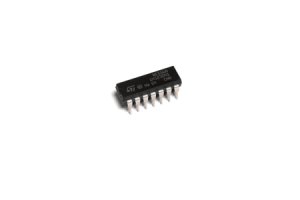
NE556 Dual Bipolar Timer: Structure and Working Principle
on September 26th
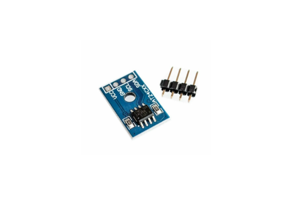
AT24C256 EEPROM: Functions, Working Principle, Applications, and 24LC256 Comparison
on September 26th
Popular Posts
-

What is GND in the circuit?
on January 1th 3259
-

RJ-45 Connector Guide: RJ-45 Connector Color Codes, Wiring Schemes, R-J45 Applications, RJ-45 Datasheets
on January 1th 2810
-

Understanding Power Supply Voltages in Electronics VCC, VDD, VEE, VSS, and GND
on November 20th 2624
-

Fiber Connector Types: SC Vs LC And LC Vs MTP
on January 1th 2253
-

Comparison Between DB9 and RS232
on January 1th 1869
-

What Is An LR44 Battery?
Electricity, that ubiquitous force, quietly permeates every aspect of our daily lives, from trivial gadgets to life-threatening medical equipment, it plays a silent role. However, truly grasping this energy, especially how to store and efficiently output it, is no easy task. It is against this background that this article will focus on a type of coin cell battery that may seem insignificant on the...on January 1th 1838
-

Understanding the Fundamentals:Inductance Resistance, andCapacitance
In the intricate dance of electrical engineering, a trio of fundamental elements takes center stage: inductance, resistance, and capacitance. Each bears unique traits that dictate the dynamic rhythms of electronic circuits. Here, we embark on a journey to decipher the complexities of these components, to uncover their distinct roles and practical uses within the vast electrical orchestra. Inductan...on January 1th 1791
-

What Is RF and Why Do We Use It?
Radio Frequency (RF) technology is a key part of modern wireless communication, enabling data transmission over long distances without physical connections. This article delves into the basics of RF, explaining how electromagnetic radiation (EMR) makes RF communication possible. We will explore the principles of EMR, the creation and control of RF signals, and their wide-ranging uses. The article ...on January 1th 1785
-

CR2430 Battery Comprehensive Guide: Specifications, Applications and Comparison to CR2032 Batteries
What is CR2430 battery ?Benefits of CR2430 BatteriesNormCR2430 Battery ApplicationsCR2430 EquivalentCR2430 VS CR2032Battery CR2430 SizeWhat to look for when buying the CR2430 and equivalentsData Sheet PDFFrequently Asked Questions Batteries are the heart of small electronic devices. Among the many types available, coin cells play a crucial role, commonly found in calculators, remote controls, and ...on January 1th 1781
-

Comprehensive guide to hFE in transistors
Transistors are crucial components in modern electronic devices, enabling signal amplification and control. This article delves into the knowledge surrounding hFE, including how to select a transistor's hFE value, how to find hFE, and the gain of different types of transistors. Through our exploration of hFE, we gain a deeper understanding of how transistors work and their role in electronic circu...on November 20th 1769
